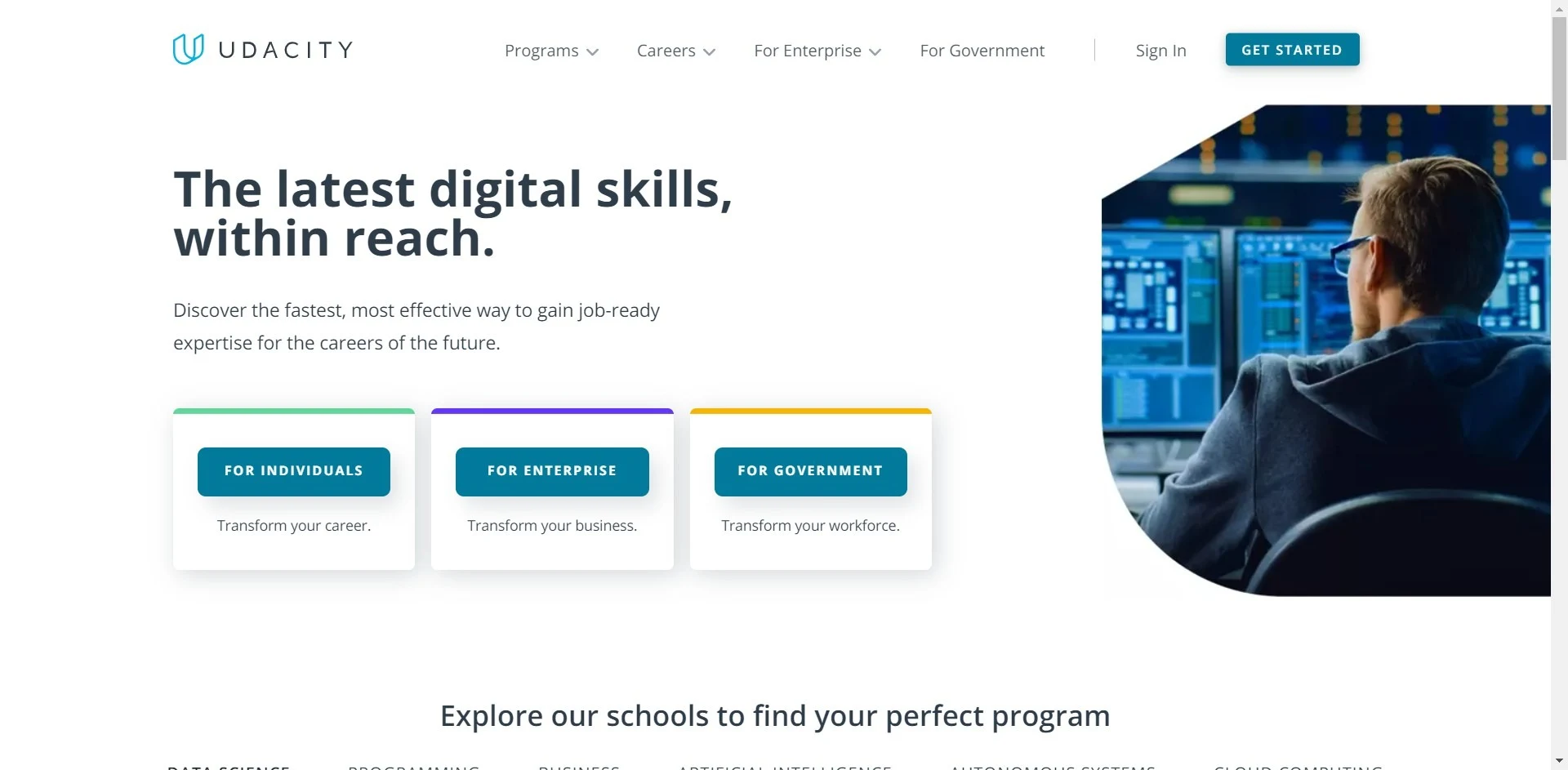- Best edX Data Analytics Courses to Help You Achieve Your Career Goals - August 16, 2022
- The Best edX Project Management Courses for All Levels - August 16, 2022
- Best EdX Certifications Guide - August 16, 2022
Continuing to improve the skills you already have or acquiring new ones is necessary if you want to push your career forward. Taking some of the best Udacity AB Testing courses will put you a step closer to becoming a professional digital marketer or business analyst.
It is impossible to know how the website visitors will react to a new design or the content they’re shown until you run an experiment that tests their reactions. Making sense of the data you acquired can be a daunting task if you don’t have enough knowledge about statistics.
It is also worth pointing out that A/B tests can’t analyze all types of situations, so you must recognize the context in which this method of acquiring data is the most effective.
So, in this article, we’re going to take you through the best Udacity A/B Testing courses that will help you learn how to use this technique to reach the customers you’re targeting. Check out our Coursera vs Udacity comparison to find out which platform offers better courses.
While Udacity doesn't have the widest selection, the degrees they DO offer are robust, industry recognized "nano" degree programs (mostly concentrated in TECH careers). If you have the choice - and are looking for recognized credentials - Udacity is the more industry specific pick.
The 5 Best Udacity AB Testing Courses
| Course | Duration | Level | Cost |
| A/B Testing by Google – Online Experiment Designs and Analysis | 30 days | Intermediate | Free |
| A/B Testing for Business Analysts | 3 weeks | Intermediate | Free |
| Statistics by SJSU | 4 months | Beginner | Free |
| Intro to Inferential Statistics | 2 months | Beginner | Free |
| Marketing Analytics | 3 months | Beginner | $399 per month |
What is A/B Testing and why is it important?
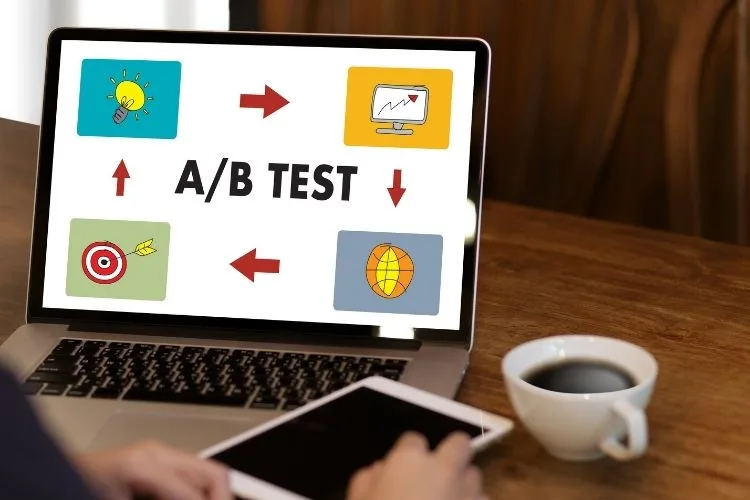
Although today it is mostly used to improve the website’s user experience or provide insight into how well particular features of a product are perceived, A/B testing has been used for decades to determine the effectiveness of a marketing campaign.
Google started using these controlled experiments in the early 2000s to establish a sufficient amount of search results per page. As the Internet market expanded, A/B Testing became one of the basic techniques used to make all types of marketing more effective.
Consequently, creating a successful marketing strategy is virtually impossible without A/B testing, while checking how a website’s visitors react to two or more different landing pages is considered one of the best ways to attract more traffic.
Having at least the basic understanding of how A/B testing works and what are its benefits has become mandatory for all digital marketers as it enables them to acquire data that reveals how effective a marketing solution is.
Go through the Treehouse vs Udacity comparison for more information about the courses you can find on these two platforms.
Creating a hypothesis and choosing the parameters
The process of creating an A/B test takes place in several different steps, and all A/B testing courses you can find at the Udacity take you through each step of this process. All A/B tests start with the creation of a hypothesis that evaluates if solution A is more effective than solution B.
It is worth noting that it is possible to introduce more variables than just two, but the complexity of the experiment increases with each variable you add. Once you’ve defined your hypothesis you will have to select the metrics you want to track.
For instance, you can measure click-through probability, quantiles, or median depending on the type of test you’re conducting and the data you want to acquire.
Also, before deciding which metrics to monitor you have to perform the invariant or sanity check so that both groups have the same constants. For instance, the two products can have the same level of distribution in a country, or the size of the two groups that are being tested might be the same.
Getting the right A/B testing tools
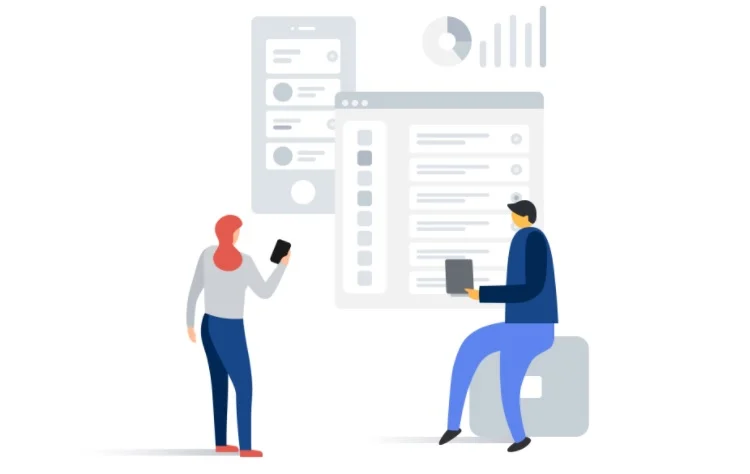
Conducting a successful A/B test without having the right tools at your disposal is impossible. Fortunately, there are plenty of A/B testing software products to choose from that allow you to gather and interpret data.
Google Optimize or Google Analytics are some of the most popular A/B testing tools that can be used for free, but platforms such as Optimizely or VWO are also frequently used by companies and digital marketing agencies.
Keep in mind that the courses you can find at Udacity describe the process of using a particular A/B testing tool, so you must have access to these tools to complete a course.
So, besides understanding the theoretical concepts of A/B testing you’ll also have to become familiar with Google Analytics or any other software product that enables you to create A/B experiments and acquire data through them.
Read our Codeacademy vs Udacity comparison to find out which of these platforms offers courses that can help you learn how to use A/B testing tools.
Setting up the parameters for the experiment
Unit of Diversion, Population, Size, and Time are the four parameters you have to design before launching an A/B test. Configuring these parameters allows you to define a ‘unique user’, create cohorts, and define the scope of the experiment or its duration.
The term the Unit of Diversion or Proxies of Users refers to the units that are acquired from the website’s visitors. You can choose to gather User IDs, IP addresses, or Cookies depending on the activity you want to monitor.
User experience consistency, variability, and ethical issues are commonly used to determine which units are best suited for a particular project.
Defining the target group before running an A/B test can help you measure the reactions of a particular group of website visitors rather than all people who visit the website or a particular page. You have to decide how many times you need to run the test to generate a relevant amount of data.
Besides the scope of the experiment, limiting the duration of the experiment and choosing the right time to run the A/B test will help you gather results that are more relevant.
Interpreting the data
This is arguably the most difficult step of the A/B testing process because it requires in-depth knowledge of statistics. Making sense of the data you acquired through A/B testing can be difficult even if you have a background in statistics.
Interpreting data acquired through tests that were tracking multiple metrics is even more difficult since the probabilities of false-positive increase with each new metric. However, there are several rules you can follow that will make the process of data interpretation somewhat easier.
The concept of statistical significance indicates that the amount of data you gather has to be sufficient to suggest a trend. If you were monitoring more than one metric, you should try to establish if the data you acquired is statistically significant and if all metrics are moving in the same direction.
Besides, the results of an A/B test can change once the different versions of the product are shown to a larger number of people.
The advantages of taking Udacity A/B Testing courses

Courses are developed and taught by industry professionals
All courses you can find at Udacity are designed and taught by experienced lecturers. Also, you can find an A/B Testing course that was developed in collaboration with Google that shows you how to conduct tests that improve mobile applications or websites.
You can study at your own pace
Rushing through the syllabus can have negative side effects. Udacity lets you decide how quickly you want to move from one lesson to another. Each course contains numerous exercises that allow you to apply the theoretical knowledge in a real-life situation.
Some A/B Testing courses are free
You don’t have to spend money to start learning how to create A/B tests or interpret data. Some courses are a part of Udemy’s Nanodegree program, and you might have to complete the entire program to understand the context in which the process described in the course should be used.
The disadvantages of taking Udacity A/B Testing courses
A limited number of courses dedicated exclusively to A/B Testing
There are only two courses at Udacity that are designed to cover all aspects of creating an A/B test. However, this process might be described and analyzed in other courses that deal with broader subjects like digital marketing or activation and retention strategy.
Factors worth considering while choosing Udacity A/B Testing courses
You won’t have too many options at your disposal if you’re searching for a course at Udacity that focuses exclusively on A/B testing. Currently, just two courses on the platform that covers only this topic, but other courses can contain lessons that take you through this subject.
Besides the scarcity of available courses, there are several other factors you should consider while picking the A/B Testing course you want to attend. Here’s what you need to pay attention to.
Skill level
All courses on this platform are designed for students that have a specific skill level, so the course you might be interested in can either be above or below your current level of knowledge about this topic.
You should also bear in mind that you might have to complete several other courses before you can attend an A/B Testing course.
Course duration
It takes anywhere between a few weeks and several months to complete a course at Udacity. That’s why you have to know how much time you can dedicate to the course every week to avoid overcommitting to a course you don’t have time to complete.
The scope of the curriculum
Each course contains short descriptions of lessons, and reading each description will enable you to know what the curriculum covers. More importantly, it will enable you to find out if a particular course is relevant to what you want to learn.
Course leads
Different lecturers lead Udacity’s courses. Learning more about the lecturer’s accomplishments can help you decide if you want to take the course he or she leads. Besides, some courses have two or three lecturers who can assist you in approaching the subject from different angles.
Technical requirements
You must meet the platform’s technical requirements to attend a course. These requirements are minimal as you just need a stable internet connection, access to an updated version of the Chrome browser, a Google account, and the ability to open YouTube videos.
The 5 Best Udacity AB Testing Courses
A/B Testing by Google – Online Experiment Designs and Analysis – Best for Online Marketers
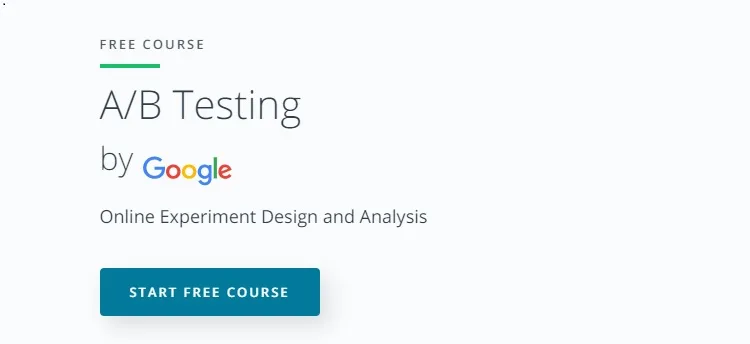
You can complete the A/B Testing by Google course in a month and learn how to design and analyze the experiments you create. You will learn how to use split tests to determine which version of the product will accomplish better results after the launch.
The course starts with an introduction to A/B testing and shows you how to select and characterize the metrics or analyze the data you gather. This intermediate course requires you to have at least a basic understanding of descriptive and inferential statistics.
However, you don’t need previous programming or A/B Testing experience to take this course.
Pros
- The course was designed in collaboration with Google
- Excellent learning materials and numerous exercises
- No fees are required to enroll
- Experienced and knowledgeable lecturers
Cons
- Previous knowledge of statistics is mandatory
- Taking additional courses might be necessary if you want to reach the advanced skill level
A/B Testing for Business Analysts – Best for Business Analysts
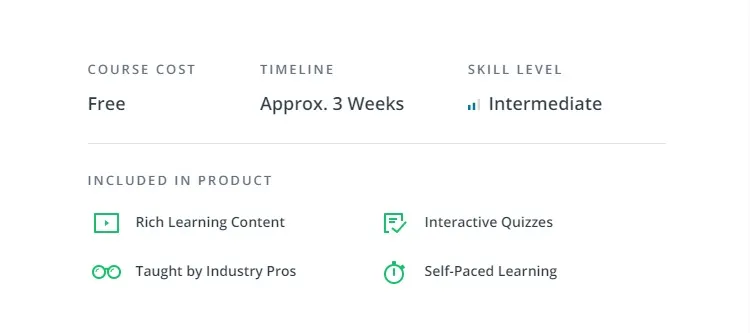
As a part of Udacity’s Business Analyst Nanodegree, the A/B Testing for Business Analysts is a mandatory course you have to complete on your way to the degree. You can attend this course for free and you can complete it in three weeks.
During that time, you will go through the entire split testing process, and learn how to choose variables or set the duration of your experiments. You will also receive guidance on how to select the right design.
To complete this course, you must have access to the Alteryx software that is only compatible with the Windows OS.
Pros
- Part of the larger set of courses required for obtaining the Udaity’s Business Analyst Nanodegree
- Covers all aspects of the A/B testing process
- The course is free
- Minimal weekly engagement
Cons
- Not suited for digital marketers
- Only for users who have Alteryx software
Statistics by SJSU – Best for understanding the basic concepts of statistics
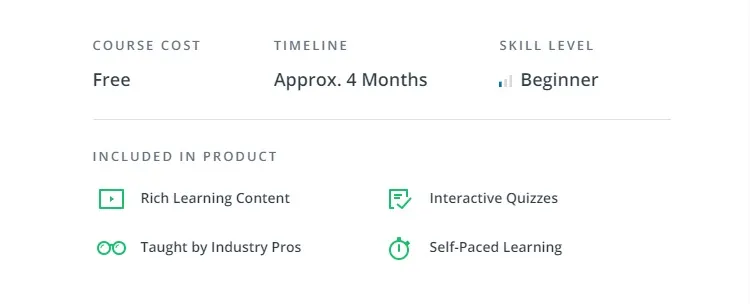
Even though it doesn’t include content related to split testing, the Statistics course by SJSU contains information that is vital for the success of A/B experiments. This 4-month course contains Descriptive and Inferential statistics parts.
Both descriptive and inferential statistics are essential for the interpretation of the data acquired during an A/B test. Completing this course before attending an A/B Testing course is advisable if you need to brush up on your statistics.
In addition, the course introduces the attendees to different methods of data acquisition through experimentation or observation. Having a basic understanding of percentages, decimals, algebra or negative numbers is mandatory for successful completion of this course.
Pros
- Offers theoretical and practical knowledge of descriptive and inferential statistics
- The course is developed by the San Jose State University
- Enables attendees to interpret the results of A/B tests
- This course is free
Cons
- Not directly related to A/B testing
- Time-consuming
Intro to Inferential Statistics – Best for understanding the basic concepts of Inferential Statistics
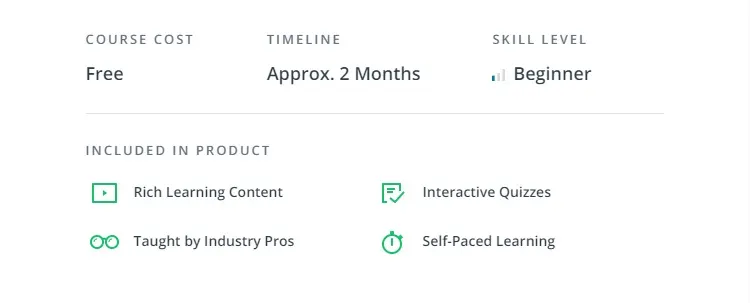
If you want to learn how to develop a good hypothesis for an A/B test, you should consider signing up for the Intro to Inferential Statistics. This course is designed to help people who have little or no data interpretation experience learn how to make predictions from the data they have.
The course has six lessons that cover topics such as hypostasis testing, ANOVA or T-Tests, or testing the strength of the correlation between two variables. Each of these topics is highly relevant for split testing and becoming more familiar with these topics can help you use your data more efficiently.
Pros
- Provides a background for an A/B testing course
- All three instructors are accomplished scientists in the field of inferential statistics
- It takes just two months to complete the course
- You can choose how quickly you want to go through the syllabus
Cons
- You might have to take a descriptive statistics course first
- Requires intermediate math skills
Marketing Analytics – Best for novice digital marketers

Data analysis or knowing how to use Google Analytics, are some of the skills you will gain by the time you complete the Marketing Analytics course. You will also go through the basic concepts of conducting A/B experiments and you’ll learn how to interpret the data you collect through testing.
Even though the course covers a broad spectrum of topics that go well beyond A/B testing, going through the entire curriculum will help you craft better marketing strategies. The course requires at least five hours of weekly engagement and costs $399 per month.
Pros
- Grants students insight into marketing data analysis
- Covers the basic concepts of A/B testing
- The syllabus is developed by marketing experts
- The course contains a lot of quizzes
Cons
- Not suited for everyone’s budget
- Data analytics tools aren’t included in the cost of the course
Frequently asked questions about Udacity A/B Testing Courses
Answer: There are no A/B testing courses on Udacity that are designed specifically for mobile apps, but the available courses provide information that applies to A/B tests for mobile apps.
Answer: The platform allows you to go through a course’s syllabus at your own pace, so there’s no need to attend lectures at specific hours.
Answer: You won’t receive a certificate after completing a free A/B testing course at Udacity, but if you complete the Business Analyst or Marketing Analyst course you will get the platform’s Nanodegree.
Answer: Understanding and interpreting the results of A/B tests require you to have at least a basic understanding of statistics. In case statistics aren’t your strong suit, you can attend one of Udacity’s courses that cover descriptive and inferential statistics.
Our Verdict: Which Udacity A/B Testing Courses are worth taking?
All internet users generate enormous amounts of data, as each click or IP address is a piece of information that can help businesses convert website visitors into regular members.
Split testing is a seemingly simple technique that is used to check how users react to two different versions of the same product. Facebook, Instagram, or Google are among companies that conduct tens of thousands of A/B tests each year to find out what their users prefer.
While Udacity doesn't have the widest selection, the degrees they DO offer are robust, industry recognized "nano" degree programs (mostly concentrated in TECH careers). If you have the choice - and are looking for recognized credentials - Udacity is the more industry specific pick.
The Udacity is one of the best online learning platforms where you can learn the basics of A/B testing. We recommend choosing the A/B Testing by Google course because it contains all the information you need to learn how to run an A/B test on your own.
Completing the A/B Testing for Business Analysts or Marketing Analytics courses might be a good idea if you want to learn how to use A/B tests for advertising or business purposes.
Which A/B Testing course at Udacity are you going to choose? Let us know in the comments or continue reading our guide to the best online coding courses or see how Udacity compares to Pluralsight.

![Best Udacity AB Testing Courses [Free!]](https://onlinecourserater.com/wp-content/uploads/2021/04/Best-Udacity-AB-Testing-Courses-URGENT.png.webp)
